8. Sunrise: A Song of Two Humans (1927)
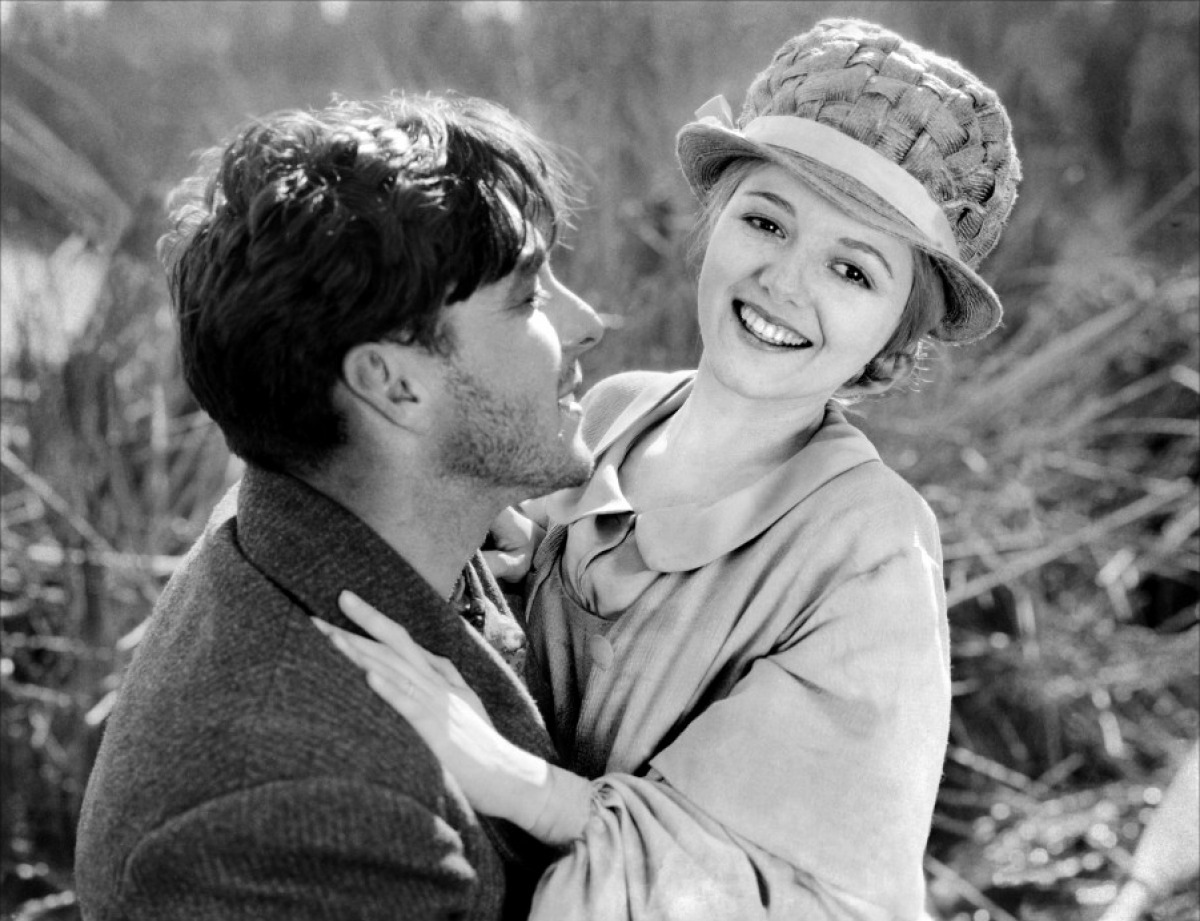
F.W. Murnau’s Sunrise: A Song of Two Humans is a staggering accomplishment and one of the very finest of the silent era. The plot is uncomplicated and unabashedly romantic—wife (Janet Gaynor) versus mistress (Margaret Livingston), bustling city versus bucolic country—but the birsk and ready camera never rests.
Crammed with cinematic innovations and never before seen cinematography courtesy of Charles Rosher and Karl Struss (particularly powerful are the film’s numerous tracking shots which combined so much of Murnau’s signature style; forced perspective, miniatures, sets of varying sizes and matte paintings, all to dizzying effect).
No one during the silent era could capture and proclaim animative dreamscapes quite like Murnau. “Sunrise conquered time and gravity with a freedom that was startling to its first audiences, to see it today is to be astonished by the boldness of its visual experimentation,” enthused Roger Ebert, adding; “Murnau was one of the greatest of the German expressionists.”
Cahiers du Cinema has called Sunrise “the single greatest masterwork in the history of cinema”—and that only seems like hyperbole if you’ve never seen this shimmering standard.
7. Notorious (1946)
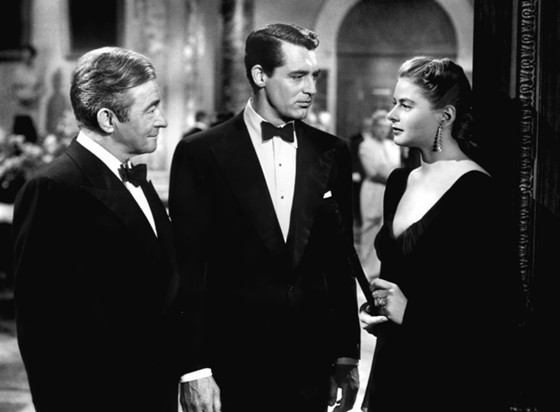
Roger Ebert has described Notorious as having “some of the most effective camera shots in [Hitchcock’s]—or anyone’s—work” and it really is one of the most ravishing-to-look-at-films in Hitch’s lengthy and monumental cinematic treasury.
World War II has just ended and the father of Alicia Huberman (Ingrid Bergman) has just been convicted as a Nazi spy. Soon Alicia is approached by U.S. government agent T.R. Devlin (Cary Grant) to spy on some Nazi sympathizers in Brazil, which she reluctantly agrees to do, though she and Devlin, against their better judgment, fall deeply in love. Alicia is pressured into marrying one of the Nazis, the charismatic Alexander Sebastian (Claude Rains), and suddenly the stakes are raised as her cover deepens and her feelings spiral.
With Notorious ol’ Hitch proves to be not just the Master of Suspense but also the master of the mise-en-scène as his camera switches to point-of-view shots to gob-smacking tracking shots with aplomb (and one in particular, a staggering tracking shot at Sebastian’s mansion in Rio de Janeiro that commences high above the entrance hall, smoothly tracks all the way down to Alicia’s hand, smartly showing her nervously twisting a key is one for the history books), and he also stocks the film full to burst with sexual politics, fast-moving melodrama, and for the time, one of the smuttiest and lengthiest (censors be damned!) onscreen kisses of its era. Whoa! Okay, maybe that kiss seems tame by today’s standards, but the intensity and the chemistry between Bergman and Grant is oh-so tangible.
Hitchcock has been at the helm of many a masterpiece throughout his lengthy and prolific career, but Notorious’ classic status stands as testament not just to his fully realized and meticulously engineers direction, but also the the passionate and penetrating performances of its legendary leads. The results are ravishing, of course, as is the psychologically complex love triangle at this effective and forceful film’s quavering heart.
6. Double Indemnity (1943)
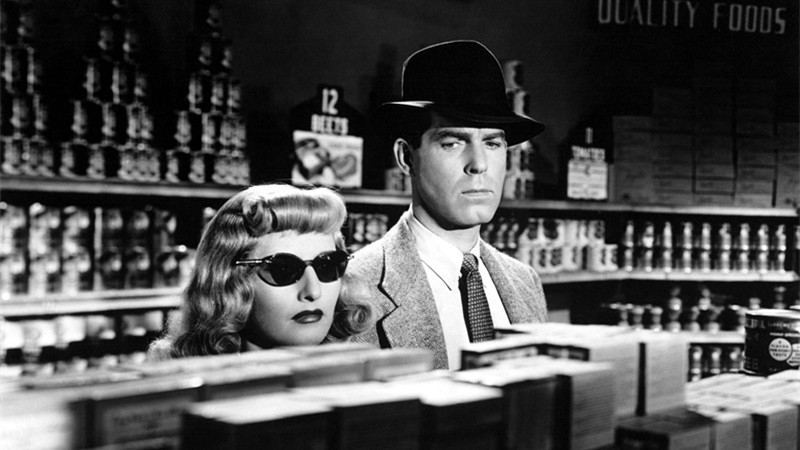
“Since Double Indemnity,” raved Alfred Hitchcock, “the two most important words in motion pictures are ‘Billy’ and ‘Wilder.’”
Not just one of the earliest A-budget studio noirs, Double Indemnity may actually be the quintessential film noir, depending on who you ask. Based off the novella by James M. Cain and directed with precision and craft by Billy Wilder, the film tells the tale of insurance agent Walter Neff (Fred MacMurray), who’s persuaded by Phyllis Dietrichson (Barbara Stanwyck) to kill her husband for his life insurance. What could possibly go wrong?
Cinematographer John F. Seitz (who also shot Wilder’s the Lost Weekend [1945] and Sunset Boulevard [1950], pulls out all the stops in this influential and unforgettable film which has so many classic movie moments it’s no wonder it’s achieved such high status amongst film scholars and cinéastea. The unusual title sequence to Double Indemnity for instance, shows the agonized silhouette of a man hobbling on crutches towards the camera while Miklós Rózsa’s understated minor chords portend some creeping disaster that helps frame all that is to inevitably follow.
Here and throughout the subtle sense of malaise and despair –– elements that made a huge mark on the French critics back in 1946 (this was a few years before the founding of the famed Cahiers du Cinéma) –– writhes uninterrupted as much by its hard-bitten and unsentimental performances as at the hand of its seamy, atmospheric, and audacious visual style.
“If I had one movie to explain to people what noir is,” says film historian Eddie Muller, “it’s Double Indemnity” and it’s all that and more, including a dangerous, glittering gem of black-and-white jewellery.
5. Ivan’s Childhood (1962)

The beloved feature-length directorial debut film from Andrei Tarkovsky (he also co-wrote along with Mikhail Papava) was regularly cited by great filmmakers such as Ingmar Bergman, Krzysztof Kieślowski, and Sergei Parajanov as a veritable fountain of influence and inspiration for, amongst other things, the bold and bravura black-and-white imagery which frequently blurs the line between real and surreal.
Based on the 1957 short story by Vladimir Bogomolov, Ivan’s Childhood artfully details the trials and tribulations of 12-year-old Russian orphan Ivan (Kolya Burlyayev), who’s family and entire village is wiped out by Nazi invaders during World War II. Tarkovsky’s film crested that wave of artful, emotive, and humanist Soviet films from this era (Mikhail Kalatozov’s The Cranes Are Flying [1957] is another), and when the film regularly visits the dreams of its young protagonist that lyrical and trancelike visions hold sway (and often rather nightmarish).
Tarkovsky famously and repeatedly stated that he preferred black and white photography for his works, and his approach to light and shadow. Particularly in Ivan’s Childhood, has had a massive and profound impact on film history as well as making him something of master of art-house cinema. Few films are as harrowing, haunting, and impressionistic as this; Tarkovsky’s elegantly composed frames fill the screen with gasp-inducing beauty, and from angles of extreme highs, lows, or fierce tilts, and sequences of abrupts cuts mingle with evocative long takes.
It’s easy to see how the film won the Golden Lion at the 1962 Venice Film Festival (among other awards it gathered all over the world), and today, well over fifty years later, it still holds the power to startle and inspire. Don’t miss it.
4. The Passion of Joan of Arc (1928)
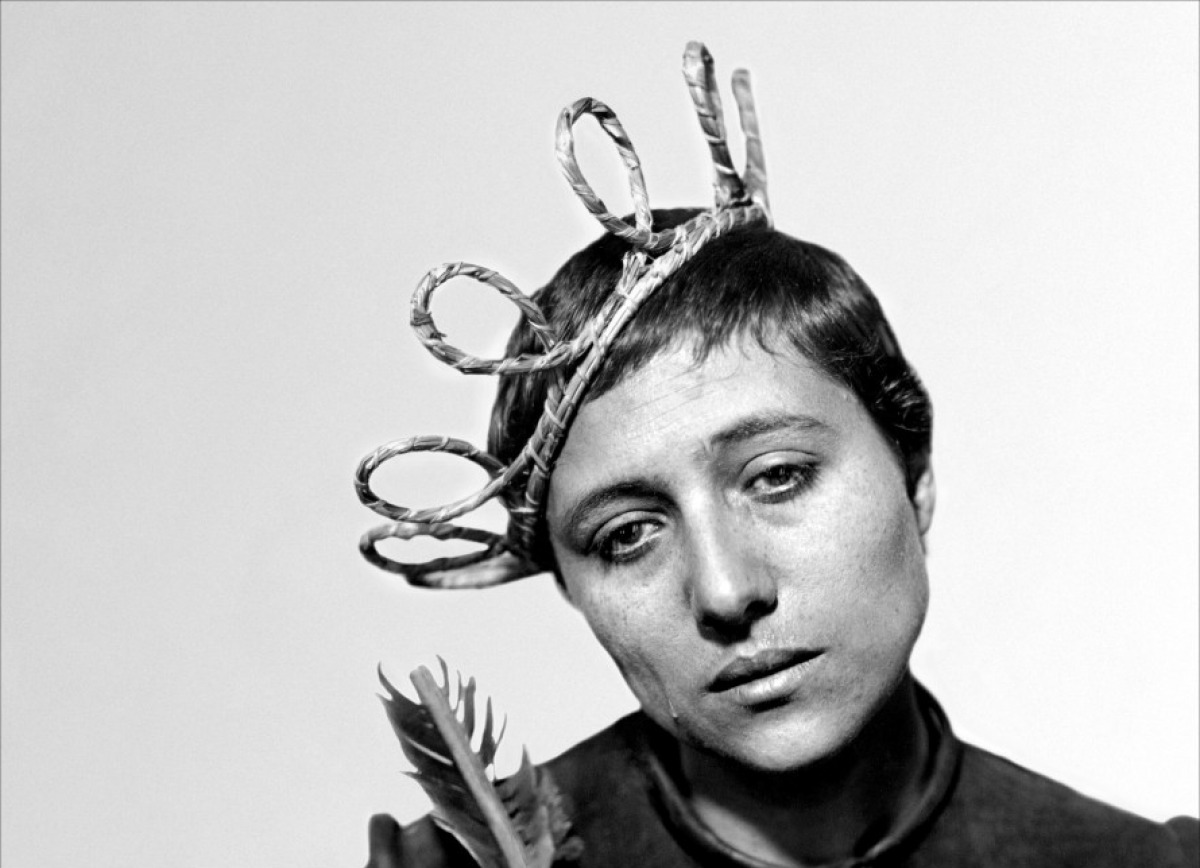
“You cannot know the history of silent films unless you know the face of Renee Maria Falconetti,” wrote Roger Ebert, on this iconic screen legend. “To see Falconetti in Dreyer’s The Passion of Joan of Arc is to look into eyes that will never leave you.”
As the martyred warrior-maiden, Falconetti is a force of nature, and Dreyer’s film is the quintessence of cinematic portraiture. Dreyer pulls no punches as he explores ideas of faith and spirituality, portraying cruel characters—judges, scholars, theologians, holy men—made ugly by their bigotry, chauvinism, and skepticism. Now ninety years old, The Passion of Joan of Arc remains an arresting peculiarity of European cinema and one of the most visually arresting and intrusive, it may also be the silent era’s crowning glory.
3. I Am Cuba (1964)

“[I am Cuba] is a dream of life in which everything is reduced to black and white,” raved the New York Times critic Stephen Holden. “As nearly as I can tell, this is all done in one unbroken take,” wrote an enthusiastic Roger Ebert, adding: “How it was done, I have no idea. [I am Cuba] is interesting not only for its technical skill, but also because it betrays a certain interest in la dolce vita that is not entirely in keeping with the movie’s revolutionary, agitprop stance.”
Set in and around Havana at the time of Cuba’s 1959 revolution, I am Cuba began as political propaganda for Soviet-Cuba and was ignored and forgotten for close to thirty years until its excited rediscovery in the 1990s when Martin Scorsese led a campaign to restore the film.
The astonishing tracking shots (presented to look like a shocking single take), using extreme wide-angle shots, with a multi-narrative approach amounts to a very singular and strikingly poetic viewing experience.
Several stories and story fragments unspool before the viewer, including a tenant farmer revolt, a small group of university students being schooled in political upheaval, a young woman and her street vendor boyfriend, both affected by a greed-driven American-run casino, and a dirt poor rural peasant family on the fringes of the city who are inevitably swept up in the impending revolt.
An influential and unforgettable film from an era relegated to the remote past, I am Cuba is cinematic agitprop with a dream-like quality made all the more surreal by monochrome.
2. The Night of the Hunter (1955)
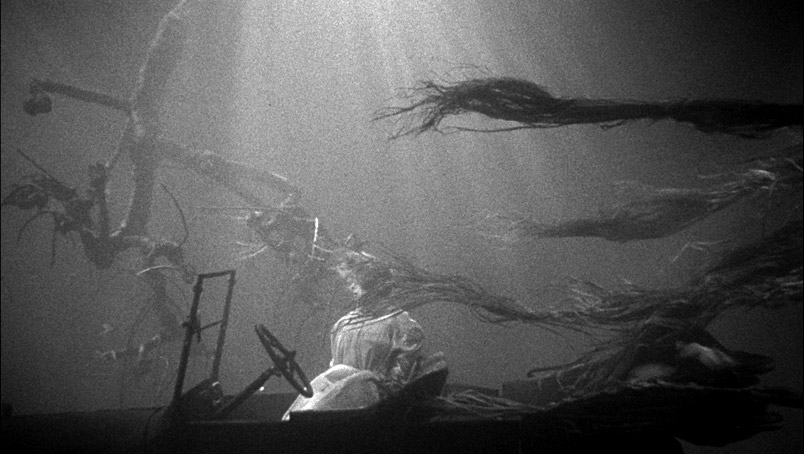
Charles Laughton’s The Night of the Hunter is a whirling pictorial dervish, as well as a beautiful traumatic fable about a brother and a sister. Set in the Dust Bowl era, America is in the clinches of the Depression, but this here is no history lesson. No, this is a tale of two children, weakened and pursued by hysterical religiosity and the ignorance of the adult world.
Clearly a work of awe and evil, of enchantment and horror, The Night of the Hunter is one of those unshakable cinematic experiences that was misunderstood in its day but in the years since has been declared a masterwork. An opiate-addled fairytale for grown-ups from the perspective of off-course and unloved children, Laughton together with legendary cinematographer Stanley Cortez (The Magnificent Ambersons, Shock Corridor), strove for and achieved a merger of German Expressionism and Film Noir composite.
The results? It’s a work that is overflowing with high-contrast, jagged angles, strange shadows, distorted perspectives, and startling, surrealistic sets. The resulting distortion of reality works flawlessly to exaggerate the emotional onscreen experience.
An atmosphere of browbeaten dread and mounting terror overwhelms and transforms The Night of the Hunter into a surrealist standard. It’s no wonder that modern innovators like the Coen Brothers, Spike Lee, David Lynch, Terrence Malick, and Martin Scorsese site the film as a major influence.
The plot is simple; “Reverend” Harry Powell (Robert Mitchum) is a religious fanatic who becomes a full blown serial killer who targets the widow (Shelley Winters) of a petty thief he did some time with. Soon Willa’s two children, John (Billy Chapin) and Pearl (Sally Jane Bruce) must escape Harry before it’s too late.
Thick with nocturnal panic, The Night of the Hunter preys on things like our childlike fears of the dark, and the adult assertion of cruelty and persecution. Here a stolen doll becomes an emblem for innocence made absent, a riverside trek is bird-dogged by a deistic bully that further clouds the child’s-eye-view of a mature terrene that has lost its baby teeth. Will the first blush of dawn ever erase what the night has revealed?
1. Citizen Kane (1941)
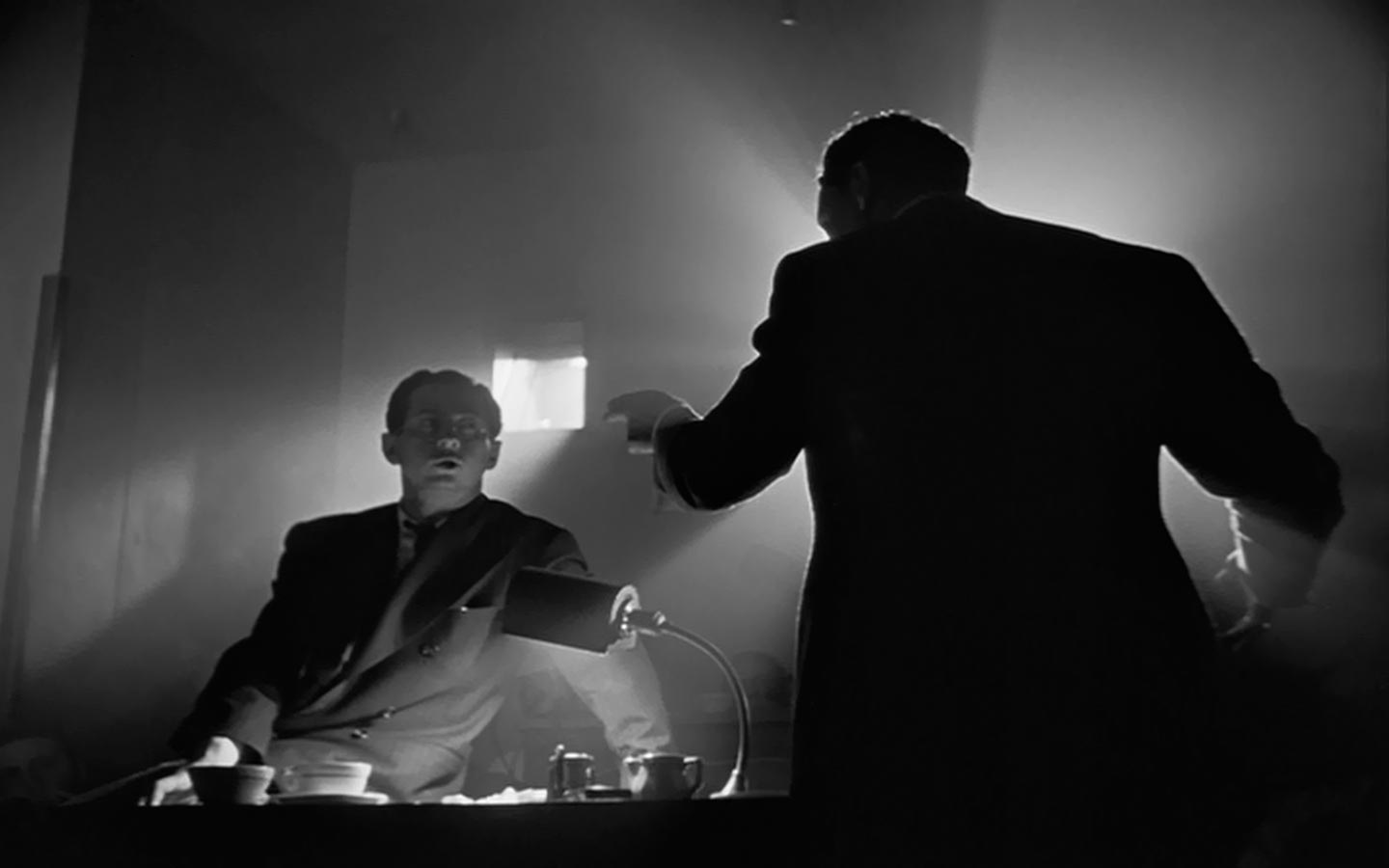
Easily the most innovative studio picture of its time, and the most visually astonishing black-and-white movie from the Golden Age, Orson Welles’ Citizen Kane changed cinema for the betterment of all and, from a technical aspect at any rate, has aged incredibly well.
“[Citizen Kane’s] style,” wrote the Sunday Times critic Dilys Powell in 1941 “was made with the ease and boldness and resource of one who controls and is not controlled by his medium.”
Co-written, starring, and of course directed by Welles (at the tender age of 25!), and filmed in secrecy to preempt any legalese that might block production (the film was based on real-life newspaper magnate William Randolph Hearst), Citizen Kane is a legendary cinematic spectacle for a number of reasons, but of course for the means of this list we shall focus on the visual grandiosity and the legacy that resulted from that.
Time magazine detailed that “[Citizen Kane] has found important new techniques in picture-making and storytelling,” and arguably the most inventive technical aspect of the film is the extensive use of deep focus; for nearly every scene of the film finds the foreground, background, and the spaces in between in crisp, sharp focus.
Welles’ brilliant director of photography, Gregg Toland (“the best director of photography that ever existed,” Welles espoused on numerous occasions) pulled off all of this cutting-edge deep focus mastery via experimentation with lenses and lighting. But Toland’s and Welles’ R and D didn’t end there. They utilized other unorthodox methods including frequent and very impressionistic low-angle shots, creating something of a novelty as upward shots were rarely seen and never in such profusion (this was mainly because studios in Hollywood lacked ceilings because lights and sound gear occupied such spaces).
Much credit also belongs to Welles’ editor, Robert Wise (he would go on to have a fruitful directing career), and Bernard Hermann also cut his teeth providing the musical score.
Welles uses all these elements with a virtuoso skill, indulging in symbolic and metaphoric montage with abandon. The influential French film critic and theorist André Bazin, who also co-founded the legendary Cahiers du Cinéma has proudly asserted that Welles created a revolution in filmmaking and that Citizen Kane is a sterling example of this. Bazin claimed that Welles’ Citizen Kane constituted “a dialectical step forward in film language.”
Let’s leave the last word on Citizen Kane for now with one of Welles’ great contemporaries, Erich von Stroheim, who said; “Whatever the truth may be about it, Citizen Kane is a great picture and will go down in screen history.”
Author Bio: Shane Scott-Travis is a film critic, screenwriter, comic book author/illustrator and cineaste. Currently residing in Vancouver, Canada, Shane can often be found at the cinema, the dog park, or off in a corner someplace, paraphrasing Groucho Marx. Follow Shane on Twitter @ShaneScottravis.